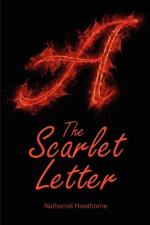“Hush, Hester—hush!” said he, with tremulous solemnity. “The law we broke!—the sin here awfully revealed!—let these alone be in thy thoughts! I fear! I fear! It may be, that, when we forgot our God—when we violated our reverence each for the other’s soul—it was thenceforth vain to hope that we could meet hereafter, in an everlasting and pure reunion. God knows; and He is merciful! He hath proved his mercy, most of all, in my afflictions. By giving me this burning torture to bear upon my breast! By sending yonder dark and terrible old man, to keep the torture always at red-heat! By bringing me hither, to die this death of triumphant ignominy before the people! Had either of these agonies been wanting, I had been lost for ever! Praised be His name! His will be done! Farewell!”
That final word came forth with the minister’s expiring breath. The multitude, silent till then, broke out in a strange, deep voice of awe and wonder, which could not as yet find utterance, save in this murmur that rolled so heavily after the departed spirit.
XXIV. CONCLUSION
After many days, when time sufficed for the people to arrange their thoughts in reference to the foregoing scene, there was more than one account of what had been witnessed on the scaffold.
Most of the spectators testified to having seen, on the breast of the unhappy minister, a scarlet letter—the very semblance of that worn by Hester Prynne—imprinted in the flesh. As regarded its origin there were various explanations, all of which must necessarily have been conjectural. Some affirmed that the Reverend Mr. Dimmesdale, on the very day when Hester Prynne first wore her ignominious badge, had begun a course of penance—which he afterwards, in so many futile methods, followed out—by inflicting a hideous torture on himself. Others contended that the stigma had not been produced until a long time subsequent, when old Roger Chillingworth, being a potent necromancer, had caused it to appear, through the agency of magic and poisonous drugs. Others, again and those best able to appreciate the minister’s peculiar sensibility, and the wonderful operation of his spirit upon the body—whispered their belief, that the awful symbol was the effect of the ever-active tooth of remorse, gnawing from the inmost heart outwardly, and at last manifesting Heaven’s dreadful judgment by the visible presence of the letter. The reader may choose among these theories. We have thrown all the light we could acquire upon the portent, and would gladly, now that it has done its office, erase its deep print out of our own brain, where long meditation has fixed it in very undesirable distinctness.




